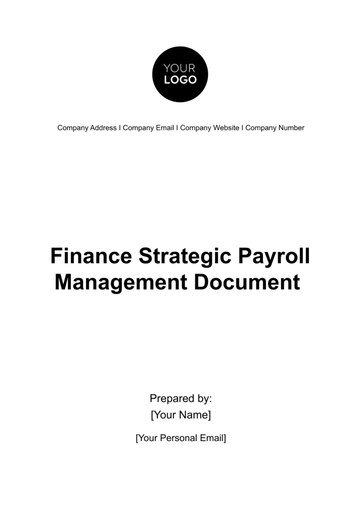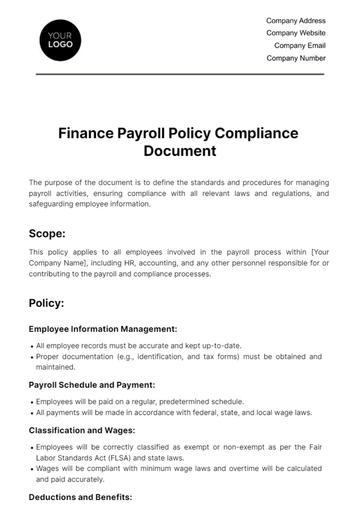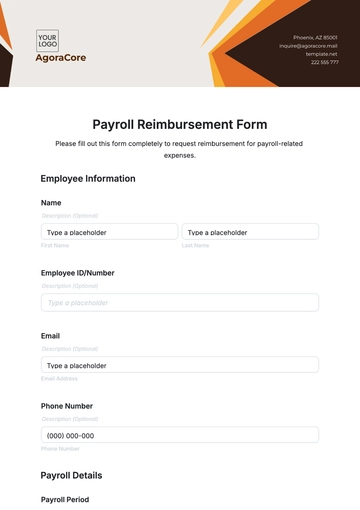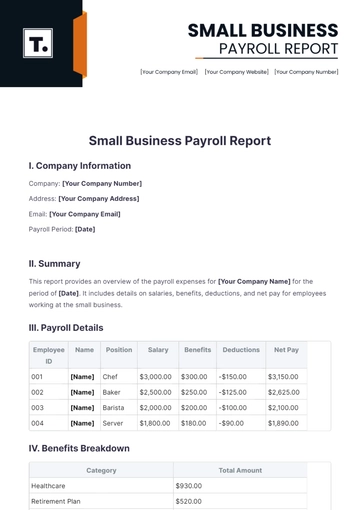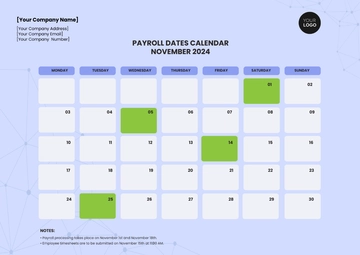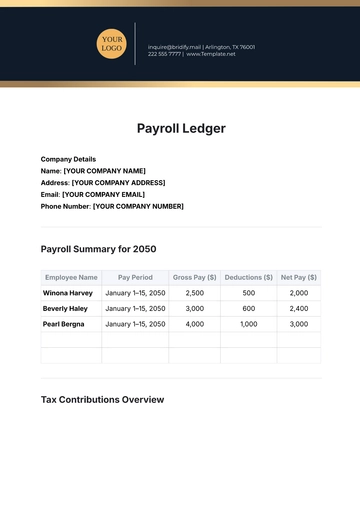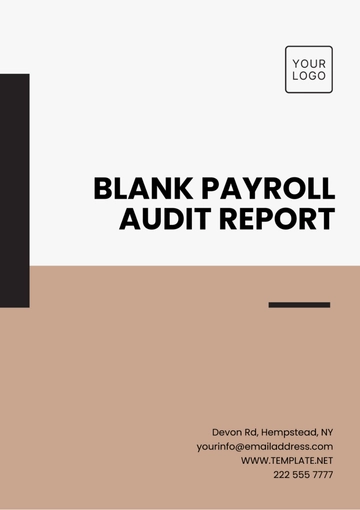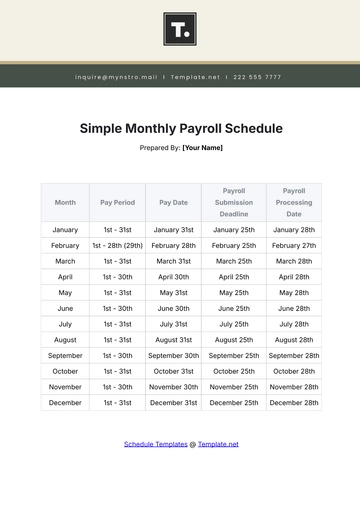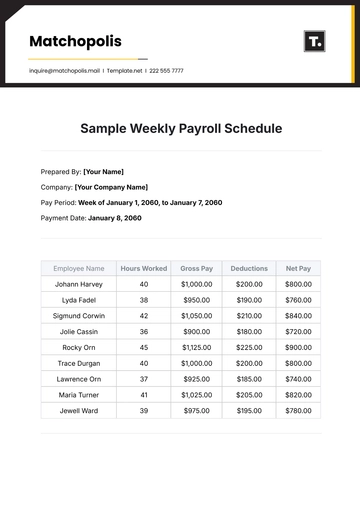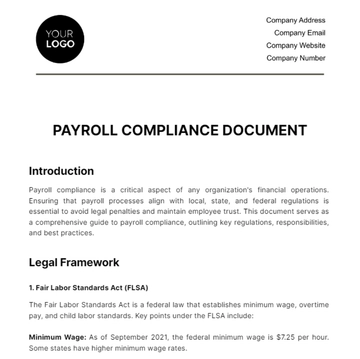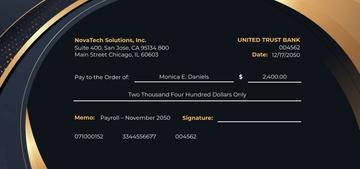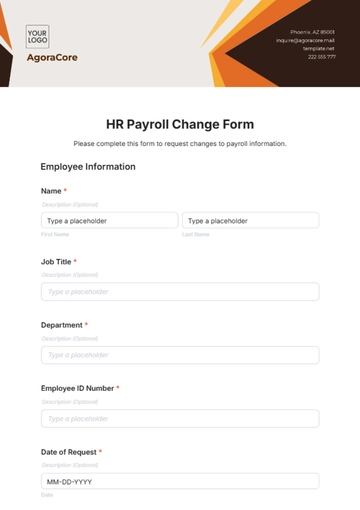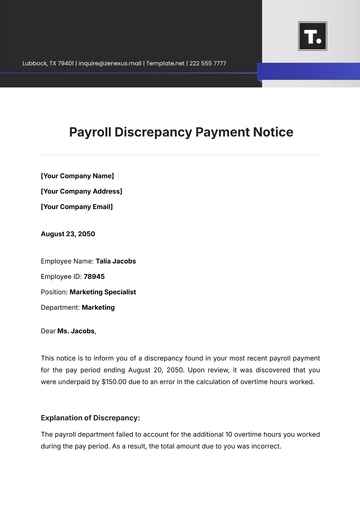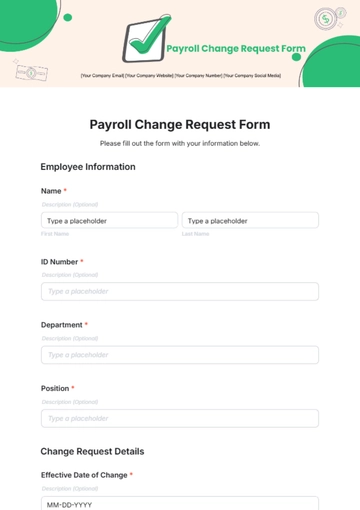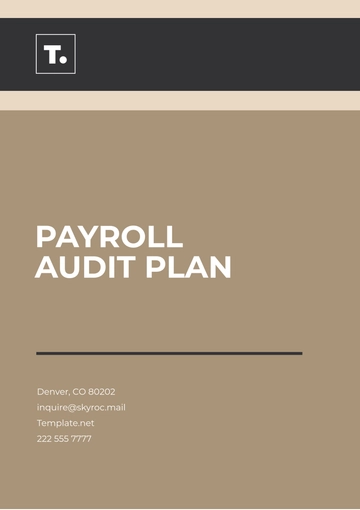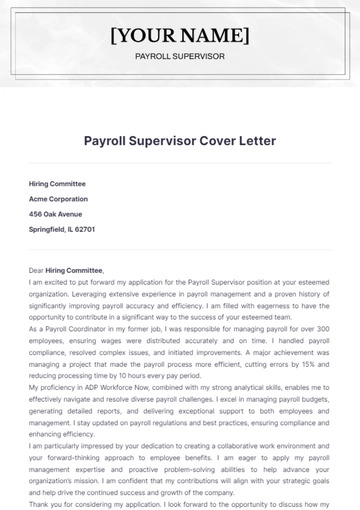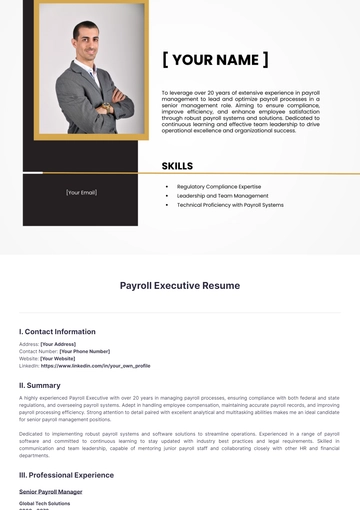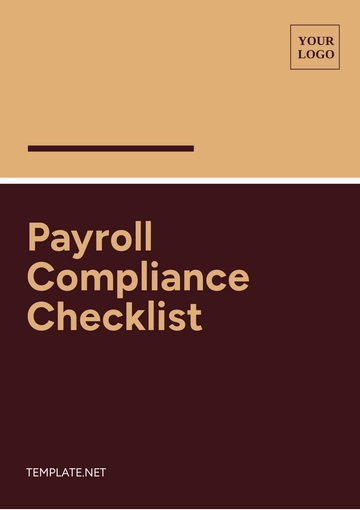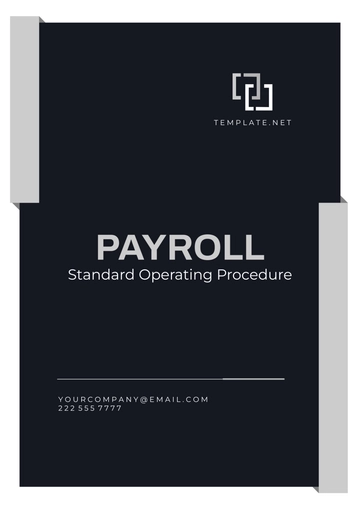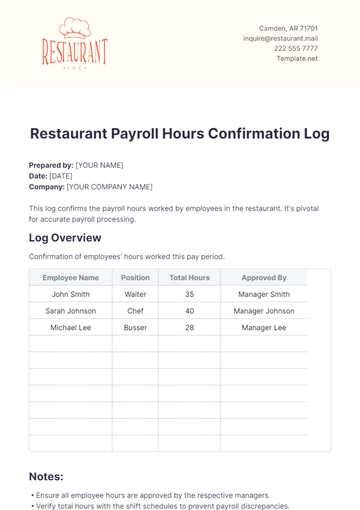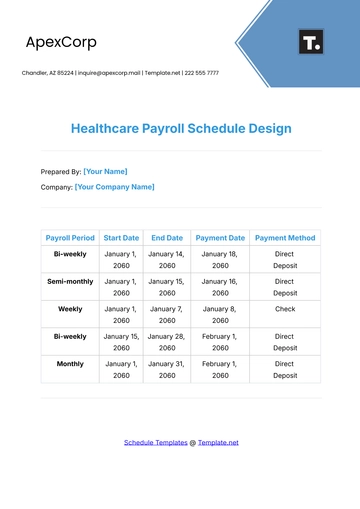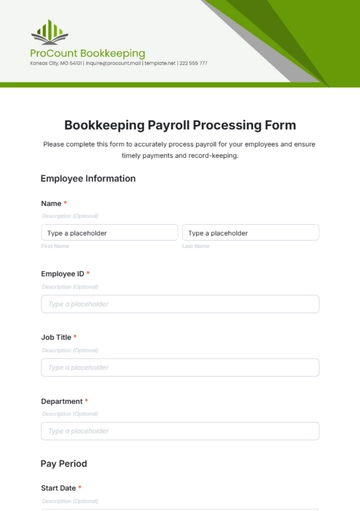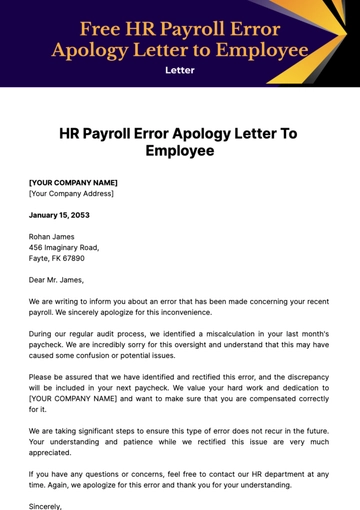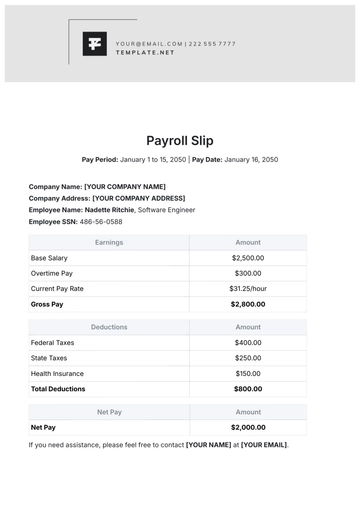Free Payroll Accounting Management Guide
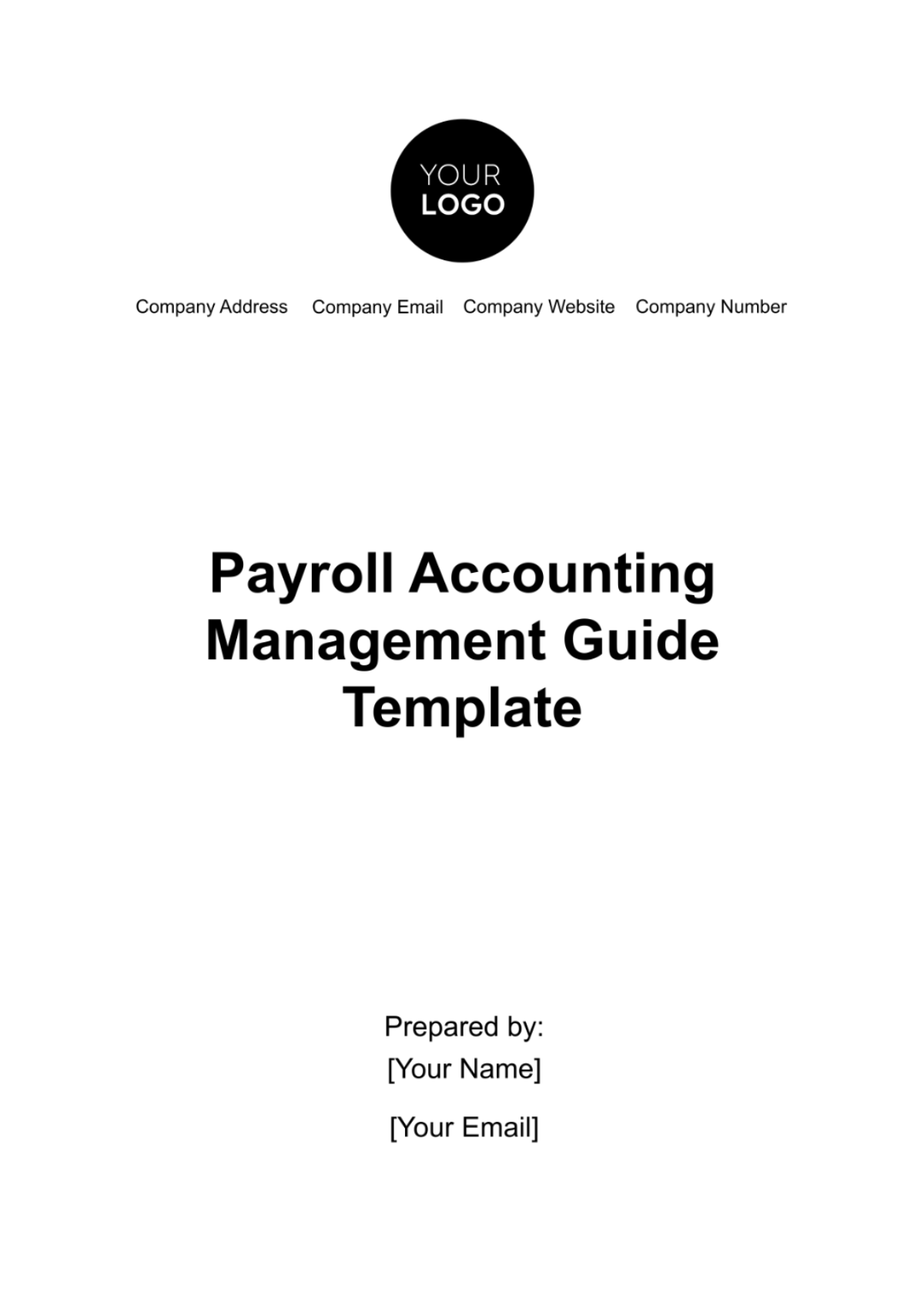
I. Introduction
A. Purpose of the Guide
This guide serves as a comprehensive resource, offering detailed and practical guidance for individuals involved in various aspects of payroll accounting. Its primary purpose is to contribute to the enhancement of operational efficiency within the payroll accounting domain. By providing clear explanations and step-by-step instructions, the guide aims to facilitate a deeper understanding of payroll procedures, making it accessible for both novices and experienced professionals. Its user-friendly approach ensures that individuals, from payroll administrators to human resources professionals, can navigate the complexities of payroll processes with ease. Ultimately, the guide seeks to empower users with the knowledge and tools needed for accurate and streamlined payroll management.
B. Target Audience
Payroll Administrators
For individuals directly responsible for overseeing and managing the payroll process, this guide provides specific insights and best practices tailored to their roles.
Managers and Supervisors
Managers and supervisors involved in the approval and oversight of payroll activities can find a dedicated section with quick references and managerial tips.
Human Resources Professionals
Human Resources professionals, dealing with aspects like employee onboarding and data management, will benefit from sections addressing their specific concerns.
C. Objectives
Clarify Payroll Procedures
The guide aims to clarify complex payroll procedures, ensuring that users have a clear understanding of each step in the process.
Reduce Errors and Discrepancies
By providing troubleshooting tips and error resolution strategies, the guide seeks to reduce common errors and discrepancies in payroll processing.
Empower User Autonomy
Through the establishment of an Employee Self-Service portal and managerial references, the guide strives to empower users to navigate their payroll responsibilities independently.
II. Initiating Payroll
A. Preparation Steps
Gather Employee Information
Establish a secure database for collecting employee details, including personal information, tax forms, and recent changes in employment status.
Create a standardized form or digital portal for employees to submit required information promptly.
Implement a verification process to ensure the accuracy and completeness of gathered employee data.
Review Regulatory Requirements
Conduct a thorough review of federal, state, and local regulations pertaining to payroll, focusing on tax withholding rates, reporting obligations, and compliance standards.
Develop a checklist to ensure all regulatory requirements are met during the payroll initiation process.
Regularly update the regulatory knowledge base to stay informed about any changes that may impact payroll procedures.
Establish a Payroll Calendar
Outline a detailed payroll calendar that includes specific deadlines for data submission, managerial approvals, and payment processing.
Communicate the payroll calendar to all relevant stakeholders, ensuring everyone is aware of key dates and responsibilities.
Implement automated reminders or notifications to streamline adherence to the established payroll timeline.
B. Roles and Responsibilities
Assign Payroll Administrator
Identify and appoint a skilled individual to serve as the primary payroll administrator, responsible for overseeing the entire initiation process.
Clearly define the responsibilities of the payroll administrator, including data verification, coordination with HR, and communication with relevant stakeholders.
Ensure the payroll administrator receives adequate training on new procedures and tools.
Involve Human Resources
Collaborate with the HR department to validate and update employee information, particularly concerning onboarding, terminations, and changes in employment status.
Establish a streamlined communication channel between payroll and HR to facilitate seamless data exchange.
Conduct joint training sessions for HR and payroll staff to enhance collaboration and data management efficiency.
Engage Managers for Approval
Communicate with department managers to involve them in the approval process, aligning payroll with budgetary considerations and departmental needs.
Provide managers with a clear overview of their responsibilities in the payroll initiation phase.
Implement an efficient approval workflow to minimize delays and ensure timely processing.
C. Considerations for a Smooth Start
Communication Plan
Develop a comprehensive communication plan to inform employees about the payroll schedule, changes, and the availability of self-service options.
Utilize multiple communication channels, such as emails, intranet announcements, and team meetings, to ensure widespread awareness.
Establish a feedback mechanism to address any employee queries or concerns related to payroll initiation.
Software and Tools Assessment
Evaluate the functionality and readiness of payroll software and tools, ensuring they align with the organization's requirements.
Conduct a user acceptance testing (UAT) phase to identify and resolve any software-related issues before full implementation.
Provide training sessions for users on how to navigate and utilize updated or new software features effectively.
Training Initiatives
Conduct training sessions for both payroll administrators and staff to familiarize them with new procedures, tools, or software.
Offer hands-on training opportunities, including workshops or simulations, to enhance practical understanding.
Create training materials, manuals, or video tutorials for ongoing reference and reinforcement of key concepts.
III. Payroll Processing
A. Data Validation and Entry
Validate Employee Information
Ensure accuracy by cross-verifying employee details, such as hours worked, leave taken, and any other relevant data.
Implement validation checks within the payroll system to identify and rectify discrepancies promptly.
Regularly update and maintain the employee database to reflect any changes in employment status.
Time and Attendance Tracking
Implement a robust time and attendance tracking system to accurately record hours worked by employees.
Utilize biometric or electronic systems for real-time tracking, minimizing errors associated with manual data entry.
Integrate time and attendance data seamlessly into the payroll processing system.
Benefits and Deductions Calculation
Calculate employee benefits and deductions accurately, considering factors such as healthcare contributions, retirement plans, and taxes.
Regularly update benefit and deduction rates to align with current regulations and organizational policies.
Provide clear communication to employees regarding changes in benefits or deductions.
B. Processing Payroll
Calculate Gross Wages
Compute gross wages based on the agreed-upon salary, hourly rates, or any additional compensation.
Implement automated calculations to reduce errors and enhance efficiency in payroll processing.
Verify that all relevant data, including bonuses or commissions, is accurately included.
Tax Withholding and Compliance
Deduct applicable taxes based on federal, state, and local regulations.
Stay updated on changes in tax codes and withholding rates to ensure compliance.
Submit accurate payroll tax reports to relevant authorities within stipulated deadlines.
Direct Deposit and Payment Distribution
Facilitate direct deposit options for employees, ensuring secure and timely payment.
Provide alternatives for employees who prefer paper checks, adhering to their preferred payment method.
Establish secure protocols to safeguard sensitive financial information during payment distribution.
C. Post-Processing Checks and Balances
Audit and Review
Conduct regular audits of the payroll process to identify discrepancies and address potential issues.
Implement a two-tier review system, involving both payroll administrators and a designated reviewer, to enhance accuracy.
Establish a standardized checklist for post-processing reviews, covering key elements such as taxes, benefits, and total wages.
Employee Communication
Communicate payroll details, including gross wages, deductions, and net pay, clearly to employees.
Address any employee inquiries or concerns promptly, fostering transparency in payroll practices.
Provide access to detailed pay stubs through secure online portals for employee reference.
Record Keeping
Maintain organized and secure records of payroll transactions, including tax filings, benefit contributions, and payment receipts.
Establish a systematic filing system for easy retrieval during audits or compliance checks.
Implement data encryption and access controls to protect sensitive payroll information.
IV. Employee Self-Service Portal Setup
A. Portal Configuration
User Authentication and Access Control
Implement robust authentication mechanisms to secure user access to the ESS portal.
Define role-based access controls, ensuring that employees can only view and modify their relevant payroll information.
Regularly update user credentials and conduct periodic security assessments.
Personal Information Management
Enable employees to update and manage their personal information, including contact details, emergency contacts, and tax forms.
Implement validation checks to ensure the accuracy and completeness of the information entered.
Provide clear instructions and tooltips to guide employees through the process of updating their details.
Communication Preferences
Allow employees to set their communication preferences, specifying their preferred channels for receiving payroll-related notifications.
Provide options for email, SMS, or in-app notifications, enhancing flexibility based on individual preferences.
Regularly remind employees to review and update their communication preferences as needed.
B. Payroll Information Access
Pay Stub Viewing and Printing
Enable employees to view and download their pay stubs securely from the ESS portal.
Ensure that pay stubs are presented in a clear and comprehensible format, including detailed breakdowns of earnings, deductions, and net pay.
Implement features for easy printing or saving of pay stubs for record-keeping purposes.
Tax Forms and Withholding Updates
Provide access to tax forms such as W-4 or W-2, allowing employees to make updates as needed.
Clearly communicate deadlines for updating tax withholding information to ensure timely payroll processing.
Integrate automated tools to guide employees through the process of updating tax-related details.
Benefits Enrollment and Management
Facilitate benefits enrollment and management through the ESS portal, allowing employees to review, select, or modify their benefit options.
Include detailed information about available benefits, coverage details, and enrollment deadlines.
Implement a user-friendly interface for seamless benefits management.
C. Self-Service Support and Training
User Guides and Tutorials
Develop comprehensive user guides and tutorials accessible within the ESS portal to assist employees in navigating its features.
Provide step-by-step instructions for common tasks, such as updating personal information or accessing pay stubs.
Ensure that guides are regularly updated to align with any portal enhancements or changes.
Helpdesk and Support Channels
Establish a dedicated helpdesk or support channel within the ESS portal for addressing employee queries.
Implement a ticketing system for efficient tracking and resolution of support requests.
Prominently display contact information for additional support channels, such as email or phone support.
Training Sessions and Workshops
Conduct periodic training sessions or workshops to educate employees on the features and benefits of the ESS portal.
Encourage participation through incentives or recognition for employees who actively engage with the portal.
Collect feedback from employees to identify areas for improvement in training materials or portal functionality.
V. Troubleshooting Payroll Issues
A. Issue Identification and Analysis
Employee Complaints and Queries
Establish a streamlined process for employees to submit payroll-related complaints or queries.
Categorize and prioritize issues based on their impact on employees and the overall payroll process.
Conduct regular reviews of submitted complaints to identify recurring patterns or systemic issues.
Audit and Data Discrepancies
Conduct periodic audits of payroll data to identify discrepancies or irregularities.
Implement automated tools for data validation to minimize errors during payroll processing.
Analyze audit reports to pinpoint the root causes of data discrepancies and address them proactively.
Tax and Regulatory Compliance Concerns
Stay abreast of changes in tax codes and regulatory requirements to preemptively address compliance concerns.
Implement regular checks and updates to ensure that payroll processes align with current regulations.
Collaborate with legal and compliance teams to address complex regulatory challenges promptly.
B. Resolution Strategies
Communication with Stakeholders
Maintain transparent communication with affected employees during the issue resolution process.
Provide clear and timely updates on the status of the issue and the expected resolution timeline.
Establish a designated communication channel, such as an email distribution list or portal notifications, for ongoing updates.
Collaboration with HR and Finance
Collaborate closely with the HR and finance departments to address issues related to employee data, benefits, and financial transactions.
Conduct joint meetings to review and resolve complex payroll challenges that require interdisciplinary expertise.
Establish clear lines of communication and escalation protocols between payroll, HR, and finance teams.
Utilization of Technology Tools
Leverage technology tools and software solutions to automate issue identification and resolution processes.
Implement error tracking and resolution features within payroll software to streamline troubleshooting.
Provide training to payroll administrators on utilizing advanced features for efficient issue resolution.
C. Preventive Measures and Continuous Improvement
Root Cause Analysis
Conduct thorough root cause analyses for major payroll issues to identify underlying systemic issues.
Implement corrective measures to address root causes and prevent the recurrence of similar issues.
Document and share findings with relevant stakeholders for transparency and organizational learning.
Training and Professional Development
Offer ongoing training programs and professional development opportunities for payroll administrators.
Focus training sessions on areas identified through issue analysis and feedback from employees.
Encourage payroll administrators to stay updated on industry best practices and emerging technologies.
Feedback Mechanism for Employees
Establish a feedback mechanism for employees to report ongoing issues or suggest improvements.
Actively seek feedback through surveys, focus groups, or anonymous suggestion boxes.
Use employee feedback to drive continuous improvement initiatives in the payroll process.
VI. Quick Reference for Managers
A. Managerial Oversight
Regular Payroll Reviews
Conduct regular reviews of payroll reports to ensure accuracy and compliance.
Verify that all employee data, including hours worked, benefits, and deductions, aligns with organizational policies.
Schedule periodic meetings with payroll administrators to discuss any anomalies and ensure timely resolution.
Budget Alignment
Collaborate with finance teams to align payroll budgets with organizational financial goals.
Review budgetary allocations for payroll-related expenses and identify areas for optimization.
Ensure that any changes in staffing levels or compensation structures are reflected in the budget.
Compliance Checks
Stay informed about changes in tax codes, labor laws, and other regulatory requirements.
Conduct regular compliance checks to ensure that payroll processes adhere to current regulations.
Establish clear communication channels with legal and compliance teams for timely updates.
B. Employee Interaction and Support
Communication Channels
Maintain open lines of communication with employees regarding payroll-related matters.
Address employee queries and concerns promptly, fostering a culture of transparency.
Utilize multiple communication channels, such as email, company announcements, and town hall meetings.
Performance Recognition
Acknowledge and recognize the contributions of payroll administrators and team members.
Implement performance recognition programs to boost morale and motivation.
Foster a positive work environment that values the importance of payroll-related functions.
Training Opportunities
Encourage payroll administrators to participate in training programs and professional development opportunities.
Provide access to resources that enhance skills in payroll management and compliance.
Support ongoing learning initiatives to keep the payroll team updated on industry best practices.
C. Problem Resolution and Escalation
Timely Issue Reporting
Establish a streamlined process for payroll administrators to report issues promptly.
Encourage proactive identification of challenges and potential solutions within the payroll team.
Implement a centralized system for tracking and monitoring issue resolution progress.
Escalation Protocols
Ensure that managers are aware of the escalation process and can intervene when necessary.
Conduct periodic reviews of escalated issues to identify systemic challenges requiring managerial attention.
Collaboration with Other Departments
Foster collaboration between payroll, HR, and finance departments for holistic issue resolution.
Establish cross-functional teams to address challenges that span multiple organizational areas.
Conduct joint meetings to discuss ongoing issues and collaborative strategies for improvement.
D. Continuous Improvement Initiatives
Feedback Mechanisms
Implement feedback mechanisms for managers to provide insights into payroll processes.
Encourage managers to share observations and suggestions for process enhancement.
Use feedback to drive continuous improvement initiatives in payroll management.
Benchmarking and Best Practices
Explore industry benchmarks and best practices for payroll management.
Benchmark internal payroll processes against industry standards to identify areas for improvement.
Implement best practices to enhance efficiency and effectiveness in payroll operations.
Technology Adoption
Stay abreast of technological advancements in payroll management software and tools.
Evaluate and adopt technologies that streamline payroll processes and enhance accuracy.
Provide training and support to managers to maximize the benefits of new technologies.
VII. Resources and Support
This table below outlines the essential resources and support mechanisms available to facilitate efficient payroll management within the organization. From comprehensive documentation to dedicated support channels, these resources aim to empower payroll administrators and ensure the smooth functioning of payroll-related tasks:
Resource/Support | Description |
|---|---|
Documentation Hub | Centralized repository of guides, manuals, and FAQs for easy reference. |
The provision of robust resources and support mechanisms is crucial for maintaining the integrity and efficiency of payroll management. A comprehensive documentation hub ensures that payroll administrators have easy access to guidelines and reference materials, fostering accuracy in their tasks. These resources empower payroll administrators, fostering a collaborative and knowledgeable environment that enhances the overall effectiveness of payroll management. With a well-equipped support system, organizations can navigate challenges, facilitate professional development, streamline issue resolution, encourage knowledge-sharing, and leverage technology advancements for optimal payroll operations. The strategic alignment of resources and support aligns with organizational goals, contributing to a resilient and adaptive payroll management framework.
VIII. Frequently Asked Questions (FAQs)
Q1. How often is payroll processed in our organization?
A: Payroll is processed on a bi-weekly basis, with paychecks distributed every other Friday. This schedule ensures a regular and predictable cadence for employee compensation.
Q2. Can employees access their pay stubs and tax forms online?
A: Yes, employees can conveniently access their pay stubs and tax forms through the Employee Self-Service (ESS) portal. This secure online platform allows employees to view, download, and print relevant documents.
Q3. What should I do if I notice an error in my paycheck?
A: If you identify an error in your paycheck, please contact the payroll helpdesk immediately. Provide details of the discrepancy, and our team will investigate the issue and work towards a swift resolution.
Q4. Are there any upcoming changes to the payroll process?
A: Any significant changes to the payroll process will be communicated through company-wide announcements and the ESS portal. Stay informed through regular updates to ensure awareness of any modifications.
Q5. How can managers assist in resolving payroll-related issues?
A: Managers can support the resolution of payroll issues by promptly reporting them through the established channels. Clear communication and collaboration with the payroll team are essential for efficient issue resolution.
Q6. Is there a platform for employees to provide feedback on the payroll process?
A: Yes, employees are encouraged to share feedback through the designated feedback mechanism available on the ESS portal. Your input is valuable and contributes to ongoing improvements in the payroll process.
- 100% Customizable, free editor
- Access 1 Million+ Templates, photo’s & graphics
- Download or share as a template
- Click and replace photos, graphics, text, backgrounds
- Resize, crop, AI write & more
- Access advanced editor
Successfully navigate payroll management with our customizable Payroll Accounting Management Guide Template available on Template.net! This fully editable guide allows seamless customization using our AI Editor Tool. Tailor the guide to your payroll management needs, providing insights and strategies that align with your organizational objectives for effective and informed decisions!
